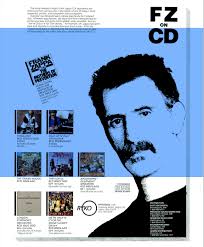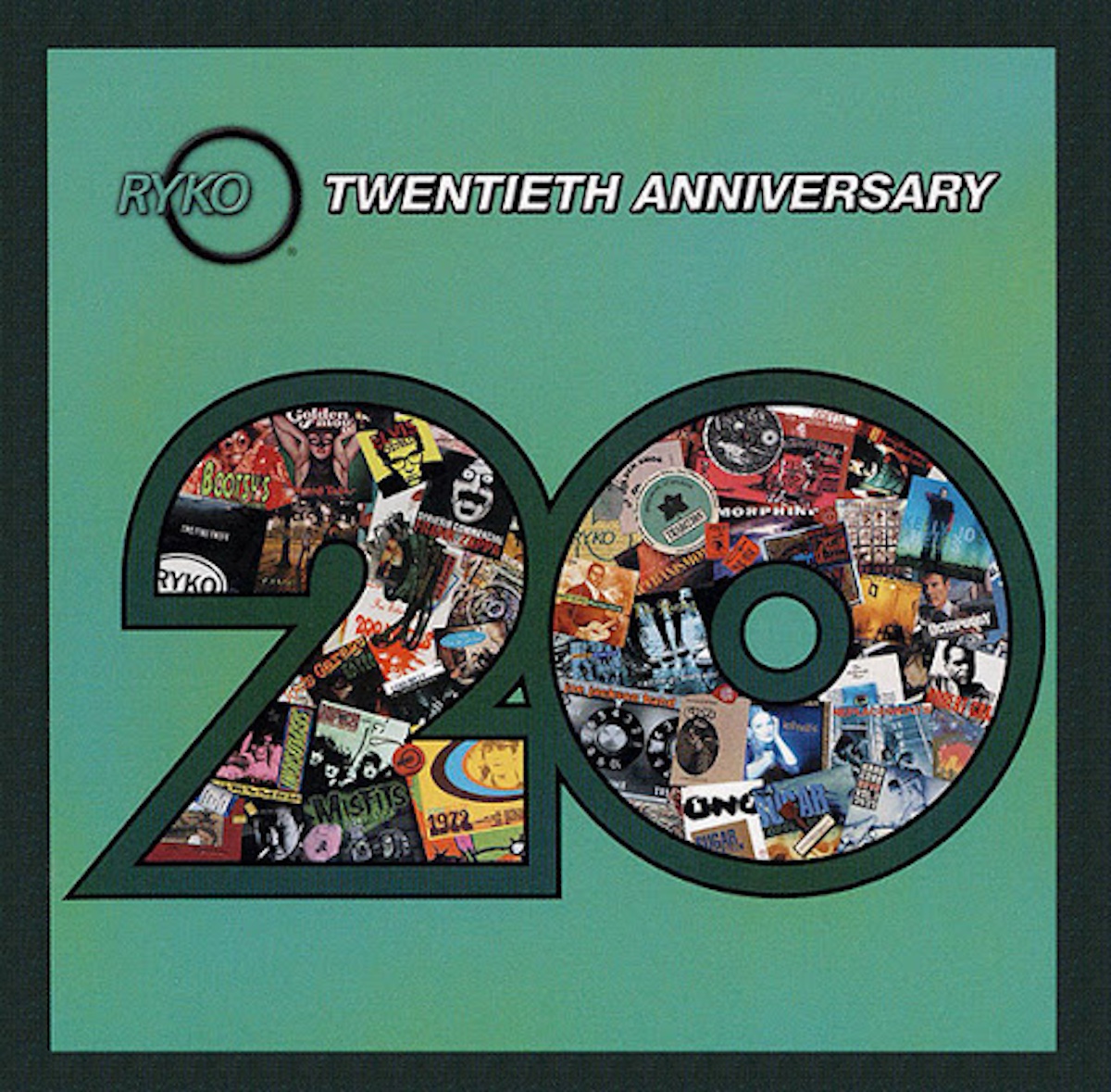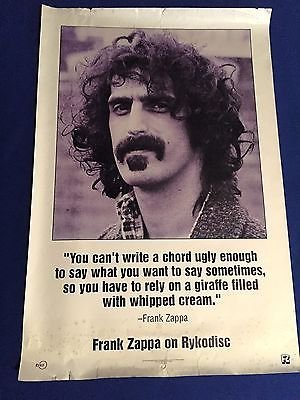Rykodisc

In the mid-1980s, when compact discs were still new and exciting, Rykodisc became known as the record industry’s first CD-only label. With vinyl still the standard format at the time, it was a certainly as risk (and not a small one), but the company rolled the dice, putting itself at the forefront of what its founders believed was an inevitability: CDs commandeering the music business.
Located on Pickering Wharf in Salem, Massachusetts, Rykodisc was established by four men with ties to the music business, one of whom was Don Rose who’d previously run Salem-based Eat Records, which specialized in bands with a cult following such as Human Sexual Response and The Incredible Casuals. The others were his brother-in-law Rob Simonds, who ran a Minneapolis-based importing outfit specializing in Japanese albums (at that time, many CDs and albums were manufactured in Japan); Douglas Lexa, also an importer and marketer of Japanese records, who was based in Los Angeles; and Arthur Mann, a music-industry attorney based in Philadelphia.
Founding, Rapid success, Perfect timing
In 1983, while they were attending a music conference in France, one topic of discussion was whether compact discs, which offered enhanced sound quality, would soon catch on with the album-buying public. Rose, Simonds, Lexa and Mann decided the time was right for an all-CD label and they invested $1,000 (about $3,000 in 2024) to get it started in 1984. They named the new company Rykodisc after the Japanese word ryko, which translates as “sound from a flash of light”, and the first CD they issued was Comin’ and Goin’, by Native American jazz saxophonist-singer-composer Jim Pepper.
It didn’t take long for Rykodisc to prove that an independent CD-only label could succeed. In 1985, the company grossed only about $100,000, but by the end of 1987, it had grossed approximately $5 million. Rykodisc was now producing between 25 and 30 CDs a year and offering an eclectic blend of reissues that included jazz, classic rock, world music, bluegrass and alt rock. The original four-person staff grew to 25, ten of whom were based in Salem; the rest were based in Minneapolis, where the label had a warehouse.
One reason for Rykodisc’s rapid success, industry watchers say, was superb timing: CDs began becoming more popular than vinyl albums in the early ‘80s and millions of consumers wanted CD versions of their favorite LPs. CDs were doing so well in the mid-1980s that Don Rose, Rykodisc’s president, opened a CD-only record store, Boston Compact Disc, with locations in Harvard Square, Cambridge and on Boston’s Newbury Street.
Reissuing major artists’ material, Reputation for quality
Another reason for Rykodisc’s success was its ability to reissue titles by big-name artists. First, in 1986, the label acquired the rights to 15 Frank Zappa albums; in just one year of making them available on CD, over 500,000 copies were sold. Next came some rare music by Jimi Hendrix; Los Angeles-based producer Alan Douglas, who owned the rights to the material, made a deal with Rykodisc that included an entire 1968 concert, Live at Winterland, which had never been available before. Widely praised by critics, the Hendrix disc quickly sold nearly 200,000 copies and became the top-selling independent CD of 1987.
In 1988, Rykodisc made a landmark agreement with David Bowie for 16 RCA albums, including Ziggy Stardust, Young Americans and Aladdin Sane. The ability to find these and many other top artists’ material on Rykodisc CDs – including recordings by Elvis Costello and Yoko Ono – brought significantly more people into record stores, thus furthering the company’s reputation and improving its bottom line. The label became known for excellent quality in terms of treating each reissue with care and delivering superb audio through using the original masters rather than copies. Rykodisc often created brand new cover art and many reissues included rare and/or previously unreleased tracks.
Steal This Disc, Steal This Disc 2, Vinyl reissues
There was one other marketing idea that went over well with consumers: In 1987, Rykodisc issued what it claimed was the world’s lowest-priced CD. The high cost of compact discs was a constant source of frustration, so the label released a 72-minute compilation CD called Steal This Disc, for only $6.98 (a typical CD back then could sell for as much as $16). The sampler included tracks from artists including Hendrix, Zappa, George Thorogood, Devo, Richie Havens, Doc Watson and Guy Van Duser & Billy Novick. Critics applauded the idea as a clever way to promote Rykodisc’s catalog and in 1988 the label released Steal This Disc 2, which included selections from Hendrix, Zappa, Beausoleil, The Residents, Duke Ellington and Mission of Burma.
Although Rykodisc had found its niche as an all-CD label, by late 1988 the label’s executives decided to issue some releases on vinyl albums and even cassettes. The reasoning was that while LP sales were declining, not everyone had changed over to CDs yet so why not make some great music available in a variety of formats? The label’s list of artists continued to expand: by the early 1990s, Rykodisc offered music by nationally-known stars like Elvis Costello and Boston-area bands like Morphine.
Eliminating the longbox, Acquiring classic recordings
In an environmentally friendly move, the label strongly advocated in favor of eliminating the “longbox,” meaning the 6×12-inch cardboard boxes in which CDs were sold throughout the ‘80s and into the early ‘90s. Among the many critics of such packaging were Rykodisc’s co-founders Don Rose and Rob Simonds, who saw it as terribly wasteful. In 1992, all the major record labels agreed to eliminate the longbox and package future CDs in a far more eco-friendly way.
In its tireless efforts to release interesting, hard-to-find music, Rykodisc acquired albums from the Everest label (known for world music, folk and blues) and revived the Tradition label in 1996, which resulted in reissues of classic recordings by blues legend Leadbelly, jazz icons Louis Armstrong and Dizzy Gillespie, flamenco star Carlos Montoya and many others, often with newly written liner notes and vintage photos included.
Digital sharing, Islandlife acquisition, Move to NYC
But while Rykodisc had capitalized on the growing demand for music on CDs, technology was once again changing. By the mid-to-late 1990s, the Internet had emerged and by decade’s end there was digital sharing of audio files. By then, sales of CDs were in decline – and the downward trend didn’t look like it was going to stop. Don Rose and his team tried to adapt, but ultimately, being an independent label became financially untenable.
After months of rumors, in late July 1998 Rykodisc’s owners announced that they were selling the label to former Island Records president Chris Blackwell’s new company, Islandlife. At first, the word was that Rose would continue on as Rykodisc’s president and the label would remain in Salem but by the end of September 1999 George Howard, the former head of Rykodisc imprint Slow River Records, had been named the company’s new president and the label was being relocated to New York City.
Return to Massachusetts, Warner Music Group acquisition
The merger did not go well. In fact, it (and the relocation) turned out to be such a terrible fit that by early 2002 the two companies separated and Rykodisc’s operations moved back to Massachusetts, this time to Gloucester, where new president George Howard lived. But the hope that Rykodisc could return to prosperity was short-lived. By the end of the year, Howard was no longer label president, and the staff of 10 was downsized to just four.
In a world that had become utterly dominated by digital downloads, labels like Rykodisc lost their niche and in 2006, when Warner Music Group acquired the label for $67.5 million, it disappeared altogether, with the publishing company Evergreen Copyrights buying the Rykomusic publishing catalogue. In 2009 Ryko Distribution became part of the Alternative Distribution Alliance, a division of Warner Music Group.
(by Donna Halper)
Former deejay, music director and radio consultant Donna Halper is a Boston-based historian who has spent over three decades as a professor, teaching media-related courses at Emerson College, the University of Massachusetts and Lesley University. She’s the author of six books including Boston Radio: 1920-2010 (Arcadia Publishing, 2011) and has written articles for a variety of publications. Dr. Halper was inducted into the Massachusetts Broadcasters Hall of Fame in 2023.

























